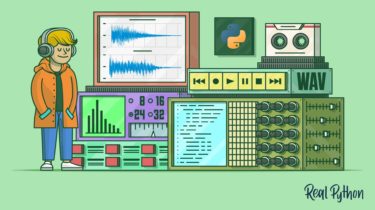Reading and Writing WAV Files in Python
There’s an abundance of third-party tools and libraries for manipulating and analyzing audio WAV files in Python. At the same time, the language ships with the little-known wave module in its standard library, offering a quick and straightforward way to read and write such files. Knowing Python’s wave module can help you dip your toes into digital audio processing. If topics like audio analysis, sound editing, or music synthesis get you excited, then you’re in for a treat, as you’re […]
Read more

